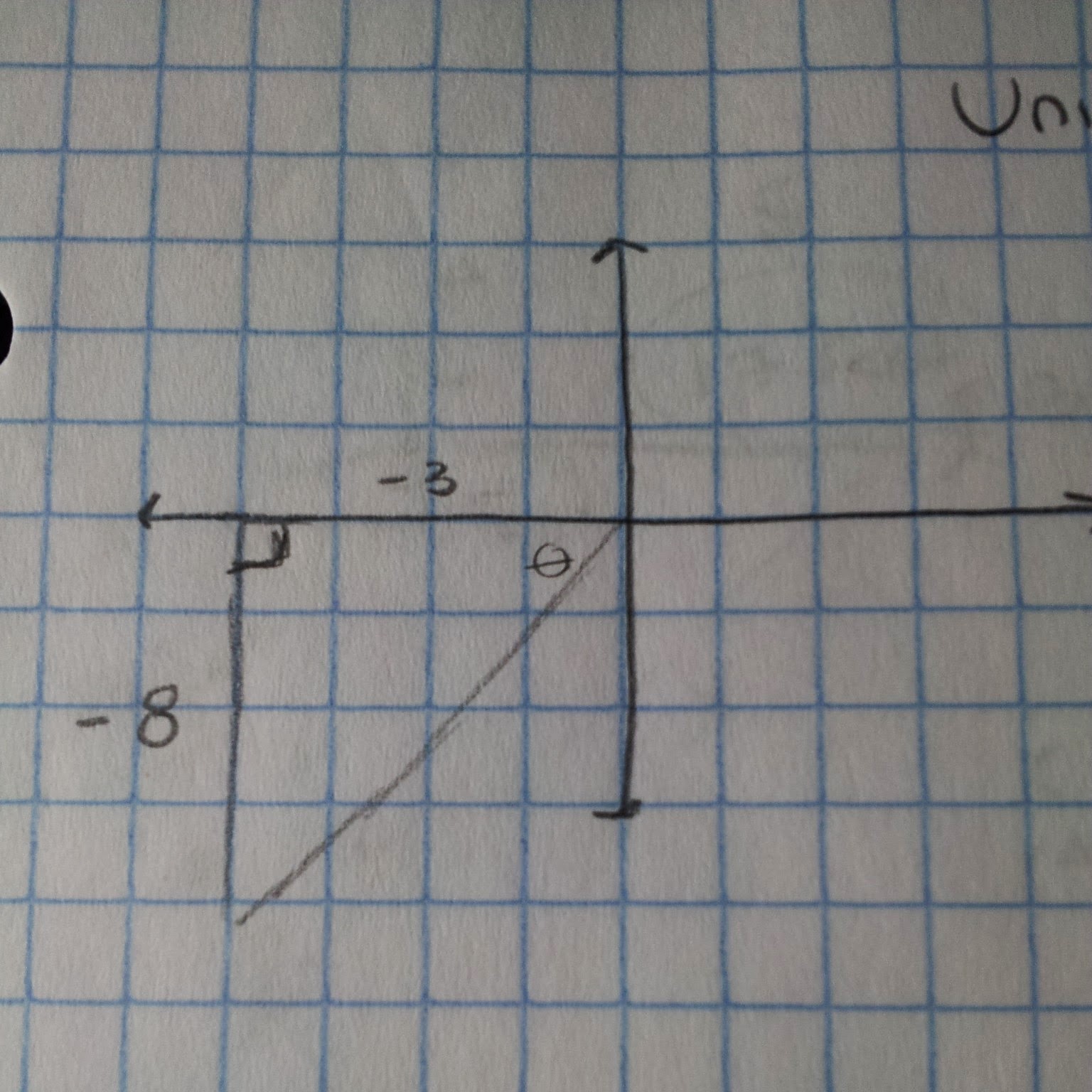The Problem: tan of theta is 8/3; sin of theta is less than 1.
So the first thing to look at is finding what quadrant the problem lies in. So tangent is positive, so that means it can be in the Quadrant 1 or Quadrant 3. Sine is less than 1 meaning that the answer will be negative, so that means it can lie in Quadrant 3 or Quadrant 4. Because they both land in Quadrant 3, then the Quadrant our answers are in lie in Quadrant 3.
We are given tangent in the problem, so we can use the reciprocal identity to find cotangent: cotangent of theta equals 1/tangent of theta. Afterwards, because we know cotangent, we can use the Pythagorean Theorem, then we can use 1+cot^2theta = csc^2theta to find cosecant.
We now know tangent (given), cotangent and cosecant, we can then use the reciprocal identity to find sine.
We now have tangent (given), cotangent, cosecant, and sine. We have tangent as a given so we can also use the Pythagorean Theorem 1+tan^2theta = sec^2theta to find secant.
We know tangent (given), cotangent, cosecant, sine, secant, and we need to find cosine. Because we found secant, we can then use the reciprocal identity to find cosine: cosine of theta equals 1/secant of theta.
However, this problem can also be solved by using SOH CAH TOA. Tangent is the ratio of sine over cosine which is y/x. You can graph it out on and you would get a right triangle. The sides are negative the coordinates are negative in the third quadrant. By using the ratios, we can find the same answers as the ones when we used identities.
To solve using SOHCAHTOA, we must find the hypotenuse using the Pythagorean Theorem.
We have found the hypotenuse so now we can use the ratios to find sine, cosine, and tangent. Sine has the ratio of y/r, cosine has the ratio of x/r, and tangent has the ratio of y/x. Remember to rationalize when you have a radical as a denominator!
To find cosecant, secant, and cotangent (which are the reciprocals of sine, cosine, and tangent), we use the ratios shows in the picture and plug in the corresponding numbers.























